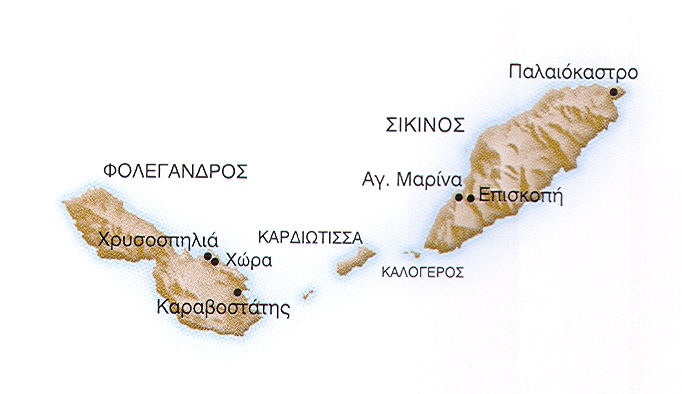PHOLEGANDROS
Pholegandros is among the smallest (33 km²) inhabited islands of the southern Cyclades. It had not been explored much and little is known abouth the ancient sites. The first known human presence dates from the EBA from booth the Panaghia Hill at Chora and the Kastello Peninsula on the northeast coast. The scattered surface finds testify the historical continuity mainly at Pountaki in the bay of Karavostatis. The ancient city of Pholegandros spreads over the Palaiokastro hill, next to the present Chora. Building remains are visible and architectural members are dispersed over the entire area, while part of the defensive wall is still visible. The location of the necropolis is suggested by a number of funeral statues of Roman times found in the area. Some parts of the tombs were reused in later buildings. Worth mentioning is the Chrysospilia cave on the Palaiokastro hill, which may have been used for cult activities; within it numerous ephebic inscriptions have been identified.
BIBLIOGRAPHY
Arnott, R. 1989. An Early Cycladic bracelet from Pholegandros in the Fitzwilliam Museum, BICS, 36: 117-126.
Brun, P. 1996. Problèmes de la micro-insularité en Grèce égéenne. Les exemples de Pholégandros et de Sikinos, REA, 98: 295-310.
Marthari, M. E. 2006. Sikinos, Pholegandros, Vlachopoulos, A. G. (ed.) Archaeology: Aegean Islands, Αthens, 302-303.


